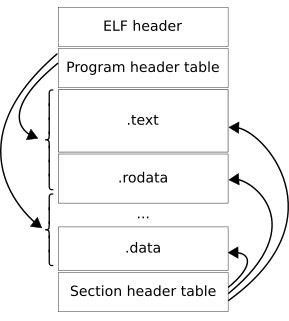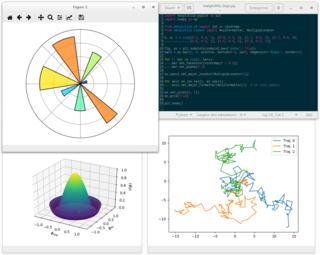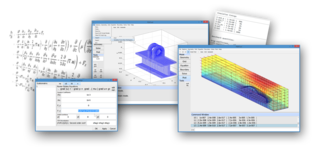The General Data Format for Biomedical Signals is a scientific and medical data file format. The aim of GDF is to combine and integrate the best features of all biosignal file formats into a single file format. [1]
A file format is a standard way that information is encoded for storage in a computer file. It specifies how bits are used to encode information in a digital storage medium. File formats may be either proprietary or free and may be either unpublished or open.
A biosignal is any signal in living beings that can be continually measured and monitored. The term biosignal is often used to refer to bioelectrical signals, but it may refer to both electrical and non-electrical signals. The usual understanding is to refer only to time-varying signals, although spatial parameter variations are sometimes subsumed as well.
Contents
The original GDF specification was introduced in 2005 as a new data format to overcome some of the limitations of the European Data Format for Biosignals (EDF). GDF was also designed to unify a number of file formats which had been designed for very specific applications (for example, in ECG research and EEG analysis). [2] The original specification included a binary header, and used an event table. [3] An updated specification (GDF v2) was released in 2011 and added fields for additional subject-specific information (gender, age, etc.) and utilized several standard codes for storing physical units and other properties. [2] In 2015, the Austrian Standardization Institute made GDF an official Austrian Standard https://shop.austrian-standards.at/action/en/public/details/553360/OENORM_K_2204_2015_11_15, and the revision number has been updated to v3.

Electrocardiography is the process of producing an electrocardiogram, a recording - a graph of voltage versus time - of the electrical activity of the heart using electrodes placed on the skin. These electrodes detect the small electrical changes that are a consequence of cardiac muscle depolarization followed by repolarization during each cardiac cycle (heartbeat). Changes in the normal ECG pattern occur in numerous cardiac abnormalities, including cardiac rhythm disturbances, inadequate coronary artery blood flow, and electrolyte disturbances.

Electroencephalography (EEG) is an electrophysiological monitoring method to record electrical activity of the brain. It is typically noninvasive, with the electrodes placed along the scalp, although invasive electrodes are sometimes used, as in electrocorticography. EEG measures voltage fluctuations resulting from ionic current within the neurons of the brain. Clinically, EEG refers to the recording of the brain's spontaneous electrical activity over a period of time, as recorded from multiple electrodes placed on the scalp. Diagnostic applications generally focus either on event-related potentials or on the spectral content of EEG. The former investigates potential fluctuations time locked to an event, such as 'stimulus onset' or 'button press'. The latter analyses the type of neural oscillations that can be observed in EEG signals in the frequency domain.
The GDF format is often used in brain–computer interface research. [4] [5] [6] However, since GDF provides a superset of features from many different file formats, it could be also used for many other domains.
A brain–computer interface (BCI), sometimes called a neural-control interface (NCI), mind-machine interface (MMI), direct neural interface (DNI), or brain–machine interface (BMI), is a direct communication pathway between an enhanced or wired brain and an external device. BCI differs from neuromodulation in that it allows for bidirectional information flow. BCIs are often directed at researching, mapping, assisting, augmenting, or repairing human cognitive or sensory-motor functions.
The free and open source software BioSig library provides implementations for reading and writing of GDF in GNU Octave/MATLAB and C/C++. [7] A lightweight C++ library called libGDF is also available and implements version 2 of the GDF format. [8]

GNU Octave is software featuring a high-level programming language, primarily intended for numerical computations. Octave helps in solving linear and nonlinear problems numerically, and for performing other numerical experiments using a language that is mostly compatible with MATLAB. It may also be used as a batch-oriented language. Since it is part of the GNU Project, it is free software under the terms of the GNU General Public License.

MATLAB is a multi-paradigm numerical computing environment and proprietary programming language developed by MathWorks. MATLAB allows matrix manipulations, plotting of functions and data, implementation of algorithms, creation of user interfaces, and interfacing with programs written in other languages, including C, C++, C#, Java, Fortran and Python.

C is a general-purpose, imperative computer programming language, supporting structured programming, lexical variable scope and recursion, while a static type system prevents many unintended operations. By design, C provides constructs that map efficiently to typical machine instructions, and it has therefore found lasting use in applications that were previously coded in assembly language. Such applications include operating systems, as well as various application software for computers ranging from supercomputers to embedded systems.







